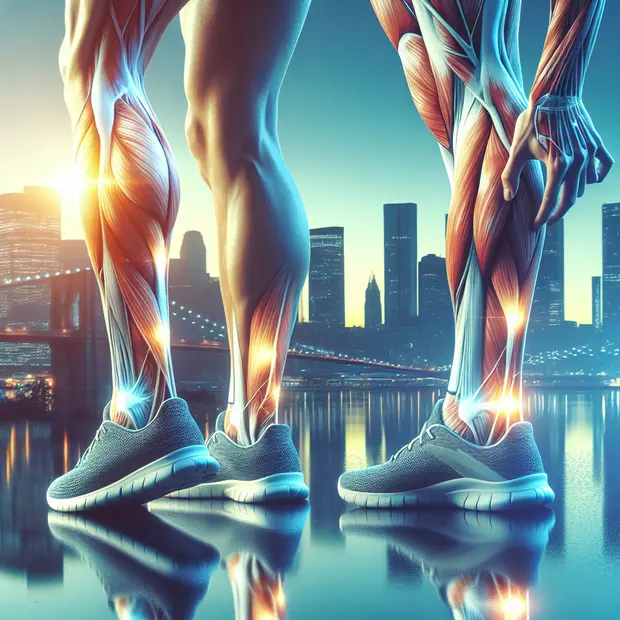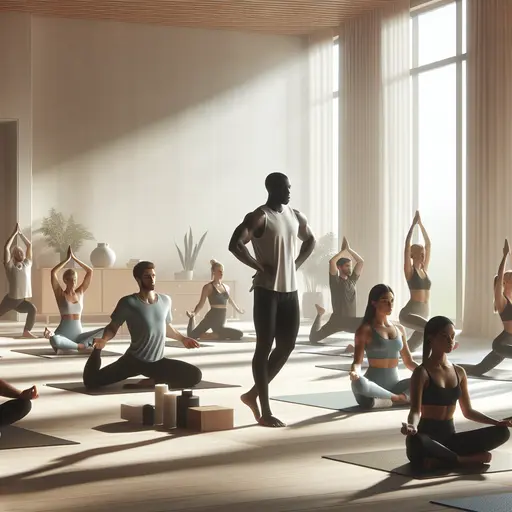Muscles Strengthened by the Downward Facing Dog Pose
This article explores the multiple muscles strengthened by the regular practice of the Downward Facing Dog pose in yoga. It delves into both the physical and scientific aspects of the pose, providing an in-depth analysis.

If you've ever tried your hand at a yoga class or even browsed through a few fitness magazines, chances are you've heard of the Downward Facing Dog pose. With its roots in ancient Indian yogic practices, this pose has quickly become a staple in fitness routines worldwide, praised for its numerous health benefits.
But have you ever wondered exactly which muscles are strengthened by the Downward Facing Dog pose? If you have, you're in good company. As a passionate yogi and professional content writer for HeavenRelax.com, I've found myself asking the same question. And today, I'm here to share the answers I've discovered through years of practice and research.
Fundamental Muscles Strengthened By The Downward Facing Dog Pose
Yoga is as much about strength as it is about flexibility, and the Downward Facing Dog pose is the perfect embodiment of this principle. This classic yoga pose, known as Adho Mukha Svanasana in Sanskrit, is a powerhouse in terms of the numerous muscle groups it targets and strengthens. Let's delve deeper into the specific muscles that are targeted and the unique benefits that each one receives from the Downward Facing Dog pose.
- Arms and Shoulders: One of the first areas to feel the effects of the Downward Facing Dog pose is your arms and shoulders. As you hold the pose, the weight of your body places a gentle but firm pressure on these areas. This not only helps to build strength in the muscles of the arms and shoulders, but it also improves their flexibility and endurance. The continuous strain helps to build up strength over time, helping you to execute other yoga poses with ease and precision.
- Hamstrings: Imagine feeling a stretch that not only feels good but also strengthens your muscles. That's what happens to your hamstrings when you perform the Downward Facing Dog. As you push your heels down towards the floor, you'll notice an unmistakable stretch in your hamstrings. This stretch, when performed regularly, can lead to stronger, more flexible hamstrings. This is extremely beneficial in preventing injuries and improving overall leg strength.
- Calves: Not to be left out, your calves also get a good workout in this pose. Similar to the effect on the hamstrings, your calves are stretched and strengthened as you strive to keep your heels grounded. This helps in enhancing your balance and stability, which is key in performing various physical activities and sports. Additionally, it also helps to alleviate issues like calf tightness or stiffness, boosting overall leg health.
- Abdominals: When it comes to core strength, very few exercises can match the effectiveness of yoga poses, and the Downward Facing Dog is no exception. The inverted V shape that your body forms during the pose is a great way to engage your core. It helps to tone the abdominal muscles and improves your core strength and stability, which is integral for overall body strength.
- Back Muscles: Lastly, this pose does wonders for your back muscles. From your lower back to your spine, your back muscles are lengthened and strengthened by the pose. This can result in improved posture and can also help alleviate back pain. It can also increase your back's flexibility, agility, and resilience, making it easier for you to bend, twist, and stretch without discomfort or risk of injury.
In conclusion, the Downward Facing Dog is a comprehensive full-body exercise that targets and strengthens multiple muscle groups. A consistent practice of this pose can result in improved strength, flexibility, and overall physical fitness. It's a testament to the power and efficacy of yoga in promoting holistic health and well-being.
The Science Behind The Pose
While anecdotal evidence and personal experience certainly attest to the benefits of the Downward Facing Dog pose, scientific research has also corroborated these findings. A study published in the Journal of Physical Therapy Science found that participants who practiced the pose regularly showed significant improvements in shoulder and hamstring flexibility, as well as enhanced balance and strength.
The choice to incorporate the Downward Facing Dog pose into your fitness routine is, at its core, an investment in your overall well-being. It's about more than just flexing your muscles; it's about embracing a holistic approach to health that values balance and harmony.
So, the next time you roll out your yoga mat, remember that you're not just striking a pose. You're strengthening your body, calming your mind, and, most importantly, nurturing your spirit.
To health, wellness, and the journey that lies ahead.
🌿
Category: Yoga & Fitness
Join the community
Related Articles

Exploring the Connection Between Physical and Mental Health
Our overall well-being is often perceived as a reflection of...

Strengthen Your Calf Muscles Post-Surgery: A Comprehensive Guide
There is nothing more frustrating than an injury that keeps ...

Fitness Hacks for Busy People: Quick Yoga and Workout Routines
Life can get busy, with work, family, and personal obligatio...
Latest Articles

The Role of Minerals in Rock Formation
Welcome to another enlightening article on HeavenRelax.com, ...

The Importance of Patience in Our Life
In this fast-paced world we live in, patience is often seen ...

Importance of Patience in Customer Service
Are you ever lost for words when a customer complaint spiral...
Comments
No comments yet. Be the first to comment!